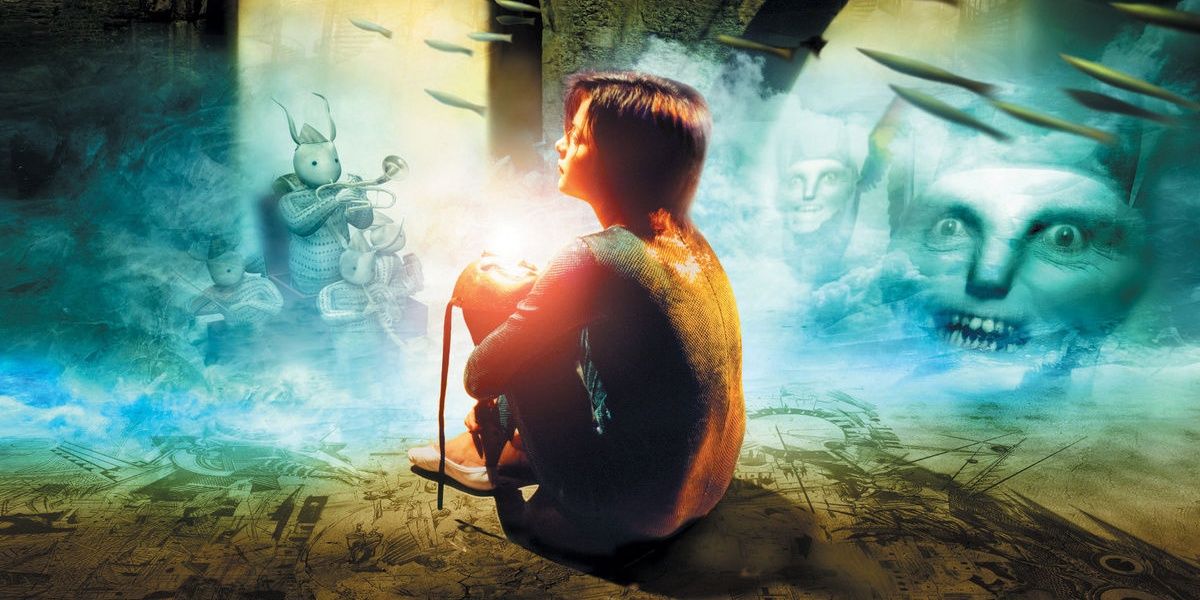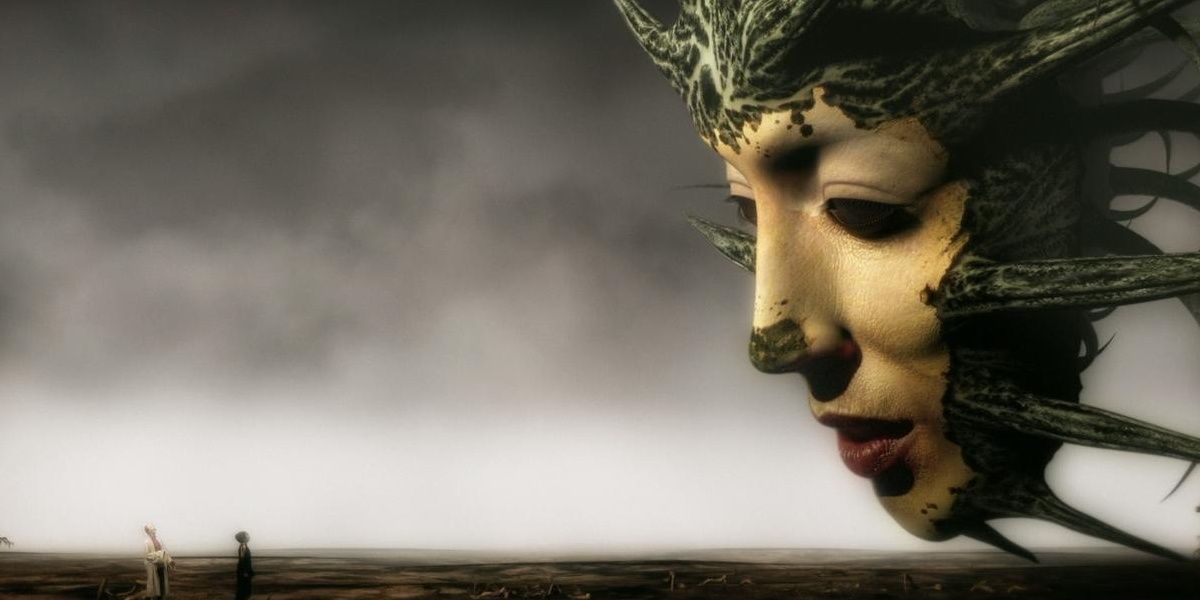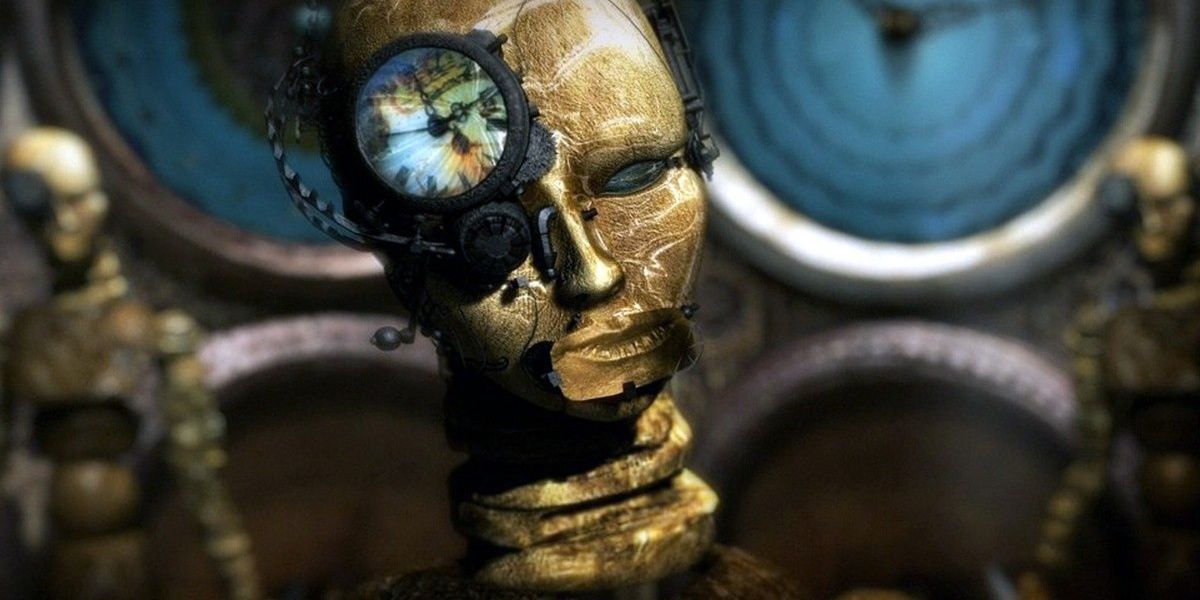Some films are so striking, so imaginative, so magically unusual that it becomes shocking that people aren't always talking about them. Seventeen years after the release of Dave McKean and Neil Gaiman's MirrorMask, it remains one of those films, and it only takes a frame or two to see why.
CGI has a generally negative cultural context, typically only regarded positively when it isn't noticeable at all. Fully CGI characters are common to modern blockbusters, as are entirely CG animated movies, but their use in any given project typically stands as a target of criticism. The classic digital backlot concept has been made unlikable by films like The Phantom Menace. Though the modern take on digital special effects can create truly fantastical dreamscapes, it's mostly used to make superheroes fly or fake objects explode. Films like MirrorMask, however, use the unique elements of CGI to create a wholly new type of art.
Explaining the plot of MirrorMask is almost a fool's errand. It's a Wizard of Oz style journey into a mystical land, complete with a radical change in visual style. A fifteen-year-old girl named Helena dreams of running away from her family's circus to live a more normal life. Her world is rocked as her mother suddenly takes ill, and she wanders from her home to find herself in a strange new reality. Helena is quickly embroiled in a conflict between the City of Light and the City of Shadow, the latter of which is gaining ground swiftly. She must go on a journey to acquire a mystical item, meet strange figures, and save both this new world and her own home. It's a classic fairy tale, but with the unique twists one would expect of the creative team.
MirrorMask comes to the screen courtesy of The Jim Henson Company. The company behind The Dark Crystal and Labyrinth sought another film in that tradition. They conceived of a prequel for the former or a sequel to the latter, but everyone involved felt that a new story would better fit the bill. Dave McKean, perhaps best known for illustrating Arkham Asylum: A Serious House on Serious Earth, had recently shown a short film to Lisa Henson, placing him at the top of her list. Henson reached out to McKean to direct, then to Neil Gaiman to write the story. The film was given a fairly small budget, only $4 million for an effects-driven epic. The story was reportedly written up in around two weeks, taking some inspiration from Labyrinth, but swiftly evolving into an original story.
The visuals of this film are unbelievable. Often simultaneously terrifying and beautiful, heartwarming and horrific, deeply unpleasant and viscerally appealing. Some of the effects-heavier scenes have made the rounds online, often described as disturbing or bizarre, and it is. The film is a callback to a bygone era when content meant for all ages could be scary by virtue of sheer alien strangeness. Among countless films that seek to transport the audience to another reality, this film does so with a level of commitment that is staggering. In strict defiance of many film productions, McKean did the design work as well as the direction. His work was reigned in by the slight budget, but that limitation led to strange invention. The imagery draws in the audience, and imprints on the mind of everyone who sees it.
While the film looks spectacular, it also sounds incredible. The music was composed by saxophone legend Iain Ballamy, who pulled in many talented musicians to create a moving score. While the film didn't have the money for a full orchestra, nearly all of the instruments in the soundtrack are real. Some of the most powerful scenes in the film are accompanied by beautiful tracks, such as Josefine Cronholm's jaw-dropping cover of "(They Long to Be) Close to You" by The Carpenters. The soundscape of the film is so key to its power. The music ties the fantastical story together and makes the film feel like an event.
MirrorMask received a very brief theatrical run before its DVD release, and its reception was decidedly mixed. Most praised the visuals and presentation, but many decried the story as weak or dull. The film's power isn't in its narrative, but the story has no trouble coming across. A simple fairytale-like story isn't a bad thing, it's a great basis to build an interesting journey around. The imagery, music, and emotional strength of the film are unforgettable.
Dave McKean has continued to create visually extravagant films in this mold with excellent pieces like 2014's Luna. Neil Gaiman has only grown in popularity, with his most beloved work Sandman finally heading to the screen later this year. The two have enormous bodies of art to look through, but this underrated film must be seen to be believed.



